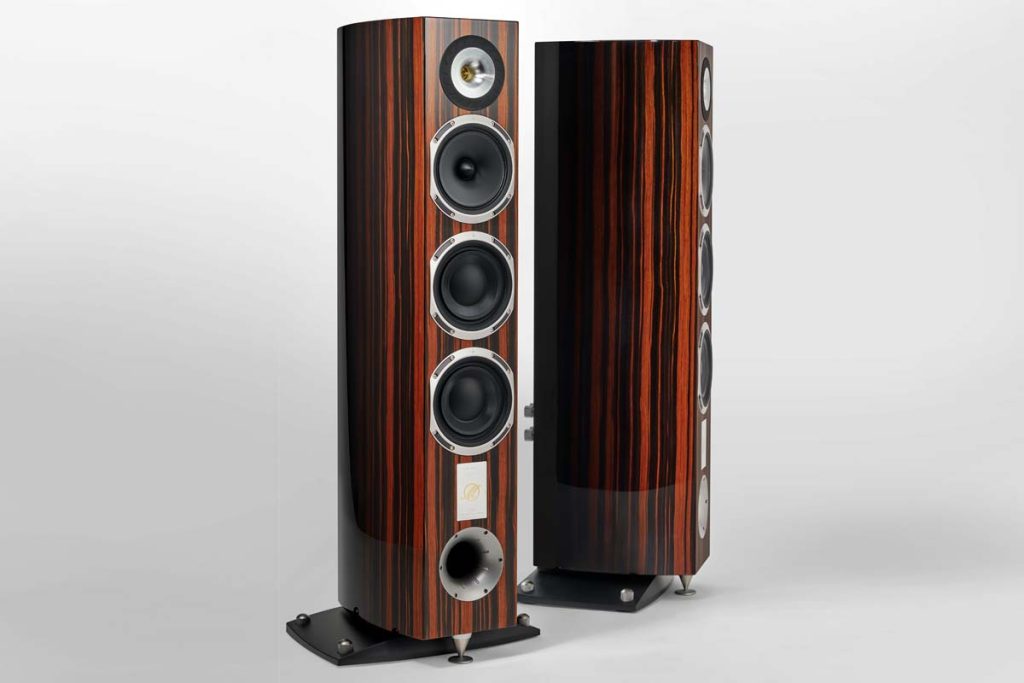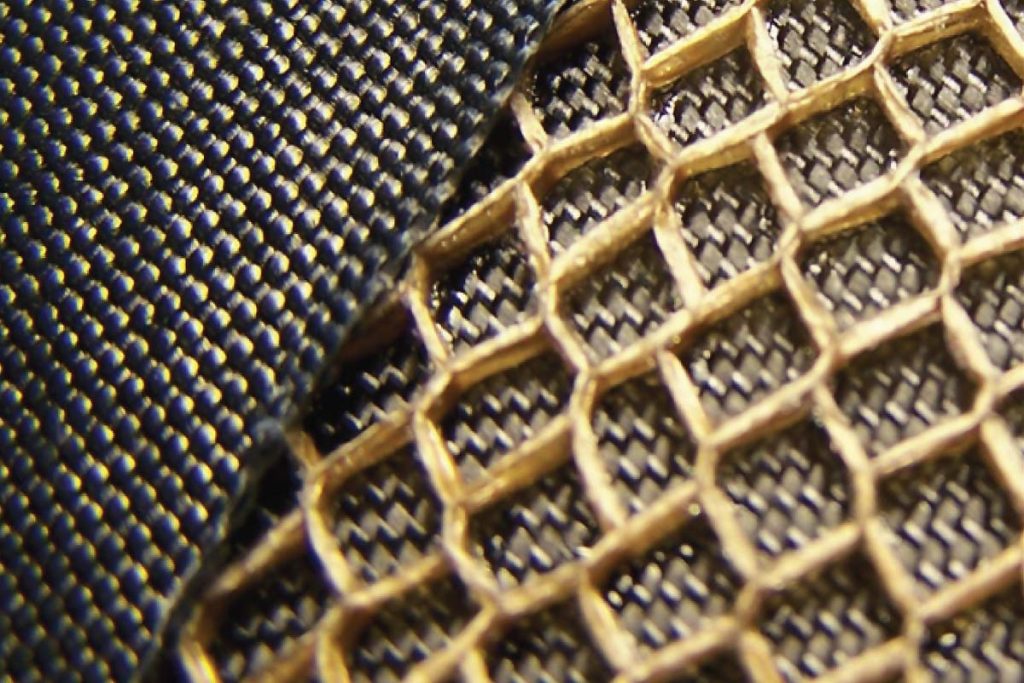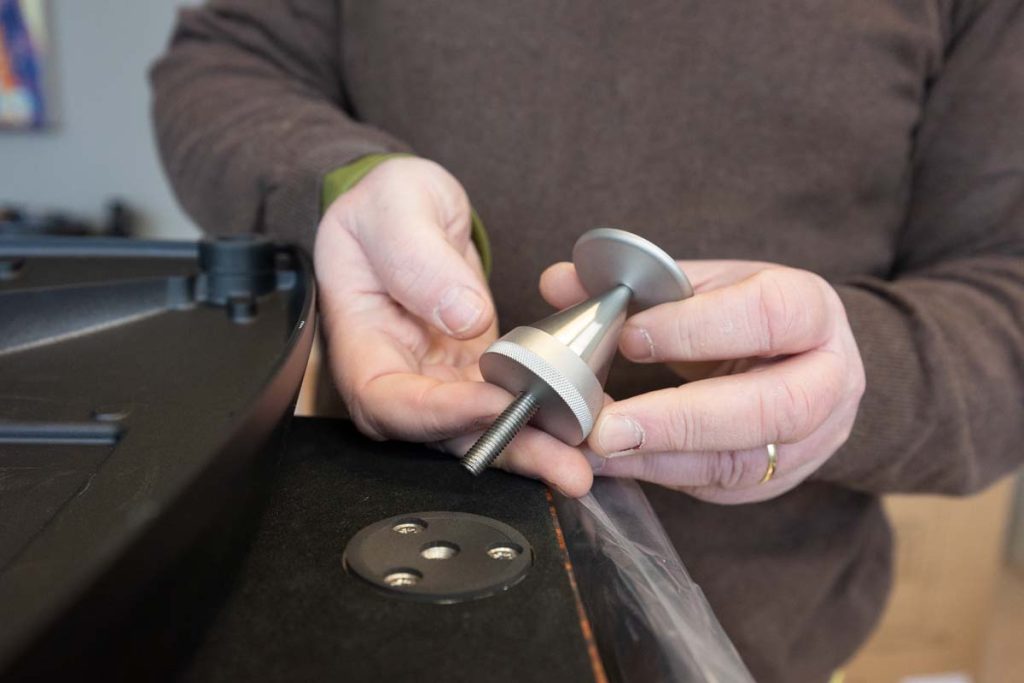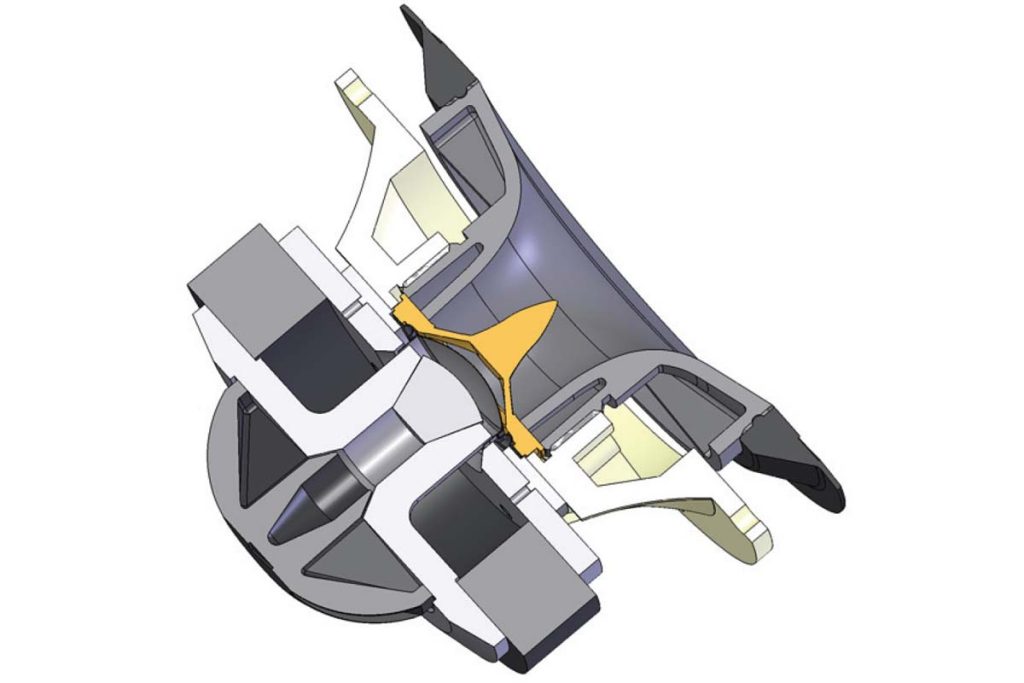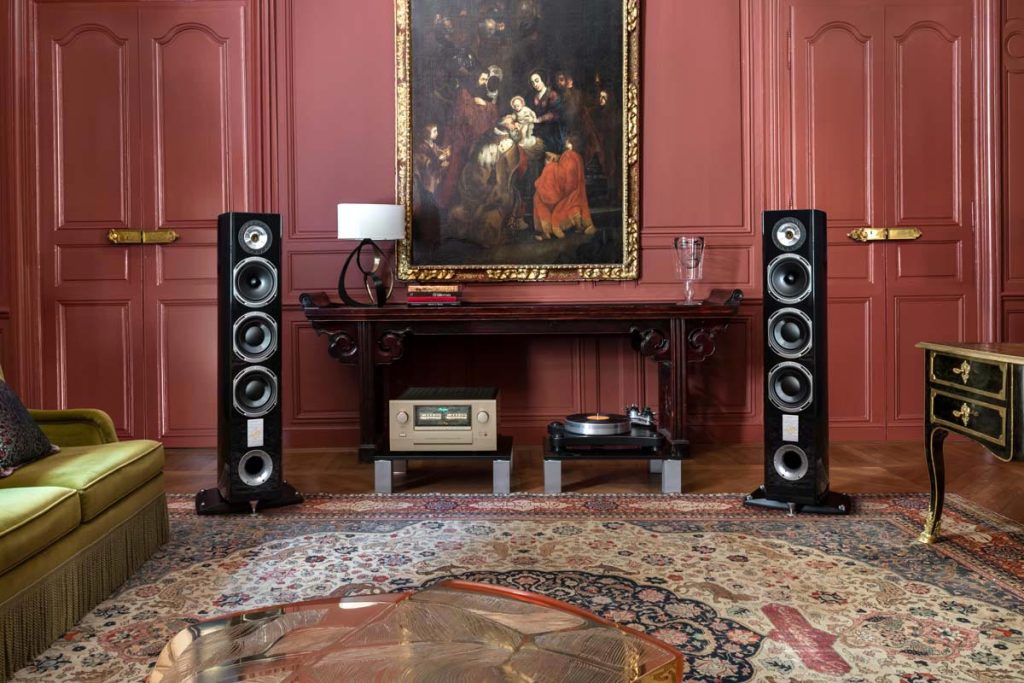To celebrate its 40th anniversary, French transducer manufacturer Triangle is treating itself and its fans to something small but very special. One of those speakers that you would take to a desert island. Incidentially, this thought sheds an interesting light on the unusual model name.
He wanted to sail around the world, he sought the mythical Northwest Passage to the Spice Islands – and he paid for his great dream with his life and the lives of most of his crew: Fernando de Magellan. Born around 1485, the Portuguese set off on his voyage in 1519, and after about a year he actually found the Strait of Magellan, which was later named after him, and became the first European to cross the Pacific Ocean with his men. On the Philippine island of Mactan, he was killed by angry tribal warriors. His journey was tangible proof of the Earth’s spherical shape. When the French loudspeaker manufacturer Triangle calls its 40th anniversary speaker “Magellan Cello”, it should definitely be understood that the name says it all: The company is looking for new ways to achieve better sound.
Not that the family-run company Triangle needs to prove anything to itself or others. The French company has long since left its mark on the top league of speakers, and the Triangle Magellan Cello 40th continues in this established tradition. To properly set up the speakers – which, while strikingly slim and just over a meter tall, weigh in at no less than 39 kilos apiece – in the FIDELITY listening room, Jürgen Reichmann, the man responsible for the German distribution of the French gems, commissioned Markus Brogle, a proven technical connoisseur and loudspeaker expert. And he fed us so many details about the design and construction in a relaxed, chatty manner that many of them can only be touched on here. These beauties, clad in high-gloss zebrano veneer – you normally only find this many layers of clear lacquer (twelve!) in piano manufacturing – are one of the cleverest designs we have tested in recent decades. Triangle left nothing, absolutely nothing, to chance in the “40th anniversary” box.
This starts with the ingeniously devised procedure for removing the Magellan Cello from its box. Although I strongly recommend getting at least one strong person to help you unpack the Magellan Cello 40th, it can be done without a “sidekick” if necessary, as sales professional Markus demonstrated with a confident grin. Because even the packaging is designed with such scrutiny that handling the Cello is not a pleasure rather than burden.
And things continue in the same vein. The slim speaker may look as elegant as a model – in addition to zebrano, there are other veneers as well as high-gloss black and white – but at no time does the chic little thing behave like a catwalk beauty. This starts with the sensitivity, which at 90 decibels at one meter also allows for the use of less powerful amplifiers. During the long and enjoyable listening session, we switched from our powerful T+A pre-/power amp combo to the small Audio Note I Zero, a tube integrated amplifier that conjures up just eight watts of sine wave power per channel from four ECL82 tubes, just to see what happens. On the Triangle speaker, this was not only sufficient for levels that were already threatening hearing damage, but also sounded completely undistorted. The tubes also brought more tonal colors into play, which the Triangle Magellan Cello 40th projected into the listening room as a panorama that was as broad as it was deep.
Incidentally, Markus Brogle listened consistently with material from vinyl records, and the “demonstration package” he had brought to Ismaning contained a few excellent black disks from different eras. These included nostalgic 80s pop, which one would have thought had everything but the potential for delightful listening experiences.
If you want to find out why even such mediocre music produced by the Triangle still provides a certain aha effect and a lot of fun, you have to go back much further in hi-fi history than the aforementioned four decades, to when full-range drivers were where it’s at in loudspeaker construction. No, I don’t mean those dull-sounding things that blared away in the alibi speakers of cheap compact systems, but rather the full-range works of art that had the difficult task of authentic sound reproduction in the days when complicated crossovers were often omitted because the necessary electronic components were not (yet) available as affordable mass-produced goods.
The genes of the full-range drivers can be found in the Triangle Magellan Cello, even though it is a genuine three-way speaker. The midrange driver can single-handedly cover frequencies from 70 hertz to four kilohertz, i.e. around four octaves of the musical spectrum.The cone is made from cellulose fibers, or in normal parlance, very stable paper, and is held in place with a comparatively rigid folded cloth surround to prevent any chance of unwanted life of its own. Because the chassis more or less single-handedly takes over the area that is particularly important for vocal reproduction, the bass and treble frequencies can be coupled to the midrange using filters with much shallower slopes than comparable designs – the sound is audibly more homogeneous, and you will look in vain for crossover and edge distortion with the Magellan Cello. In the center of the chassis, a polypropylene cone coated with damping latex acts as the contemporary definition of a phase plug. The massive magnet of this midrange driver could make many a member of the woofer faction envious – at Triangle this is just another trick to combine low distortion with efficiency.
The dome tweeter is a French connoisseur’s delight, as it embodies something of a French trademark: a horn construction which, thanks to its carefully calculated shape, ensures that the tweeter plays at practically the same level as the midrange driver.”This means we don’t have to adjust the level on the crossover, which benefits the dynamics and liveliness,” explains Markus Brogle. A phase plug in the tweeter also ensures that no stray sound components interfere with the sounding tuned for for clarity. The welcome reward for the effort is the airy transparency of the Triangle and a spatiality that you would expect from a two-way standmount speaker.
As a rule, people who want to fill somewhat larger rooms with music and are also interested in a profound bass range buy a floorstanding speaker. The Triangle Magellan Cello 40th does not utilize one large woofer, but rather two 16.5 cm diameter bass drivers, which are not only easier to control in terms of vibration, but also help to achieve the ideal of a narrow baffle. The wider the baffle of a loudspeaker, the greater the risk of interference forming at its edges and impairing the sound. Triangle’s woofers are constructed as a three-layer cone sandwich. A honeycomb structure made of cellulose is framed by layers of glass fiber, which, according to the manufacturer, should ensure “an optimal ratio between mass, damping and stiffness in the reciprocating assembly”.
The result proves the developers right: in the bottom end, the Triangle Magellan Cello 40th shows very cultivated and ultra-clean behavior, marching down to 35 Hertz when required and avoiding sponginess and thickening in the lower mid-range – thanks in part to the precisely defined cooperation with the mid-range driver. Even with music that is very energetic at low frequencies, such as Johann Sebastian Bach’s D minor Toccata and Fugue, the French speaker does not hit its limits, even at viciously high levels, especially as a front-firing bass reflex tube supports the bass range free of airflow noise.
However, I wouldn’t think of misusing the Triangle Magellan Cello 40th as a rock’n’roll speaker, because it works best when fed with acoustic material of any provenance. This could be a classical chamber trio, a live jazz ensemble or even the Russian-Greek conductor Teodor Currentzis, who hurries through Ludwig van Beethoven’s Fifth Symphony with his orchestra MusicAeterna. The Triangle masterpiece is equally adept at all-encompassing tutti force as it is at fine pizzicato filigree, and this exceptional loudspeaker also reproduces the dynamic contrast between very quiet and super loud in an accurate and seamless manner. Among other things, this requires a very stable cabinet construction – although no solid wood is used, “you couldn’t lift the speaker if it was,” grins Markus Brogle.
A multi-layer structure made of so-called HDF (High Density Fiberboard), which is bent into shape over weeks until it no longer wants to bend back again, is reinforced with an inner skeleton that would do credit to any skyscraper.This construction ensures that the cabinet, which avoids standing waves thanks to its “round corners”, does not vibrate when the drivers are working. The rear connection panel allows single and bi-wiring connection, the crossover is not simply screwed in behind the terminals, but is well insulated and stowed away from infrasound in the cabinet.
The center spike, which is clearly visible from the front, ensures a secure three-point positioning of the speaker, which feels most comfortable at a sufficient distance from the side and rear walls and, when slightly toed in, fully demonstrates its high potential for correct spatial imaging. That leaves the price, which at 12,000 euros per pair is comparatively reasonable in view of what is on offer. Above all because no additional fortune needs to be invested in amplifier electronics to make the Magellan Cello shine and sound. And to take it on a musical voyage around the world. Bon voyage!
Accompanying Equipment
Network player/DAC: Esoteric N-01XD | CD player: Mark Levinson No. 390S | Turntable: Clearaudio Innovation Compact, Artkustik Seismograph | Cartridges: Clearaudio Da Vinci and Jubilee MC, Denon DL-103R | Phono amplifier: Clearaudio Balance V2 | Preamplifier: Cambridge Audio Edge NQ, Mark Levinson No.38S, T+A DAC 200 | Integrated amplifier: Mark Levinson No. 5805, Aavik U-380, Trigon Exxceed | Power amplifier: Cambridge Audio Edge M, Mark Levinson No. 27, T+A P 200 | Speakers: Infinity Kappa 7.2 Series II, SoundSpace Systems Aidoni | Cables: from Sommer Cable, in-akustik, AudioQuest and Silnote Audio, among others
Loudspeaker Triangle Magellan Cello 40th
Concept: 3-way floorstanding loudspeaker, bass reflex | Configuration: 2 x 16.5 cm woofer, 16.5 cm midrange driver, 25 mm horn tweeter | Efficiency (1 W/1 m): 90 dB | Nominal/music load capacity: 250/300 W | Frequency range: 35 to 30,000 Hz | Crossover frequencies (12/24 dB/oct.): 350/2500 Hz | Nominal impedance: 8 Ω | Dimensions (W/H/D): 37/114/43 cm (incl. stand) | Weight: 39 kg | Finishes: piano golden oak, piano shadow zebrano, piano space black | Warranty period: 2 years | Price per pair: around €12,000
Reichmann AudioSysteme
Jürgen W. Reichmann
Graneggstraße 4
78078 Niedereschach in the Black Forest
Phone +49 7728 1064
info@reichmann-audiosysteme.de


